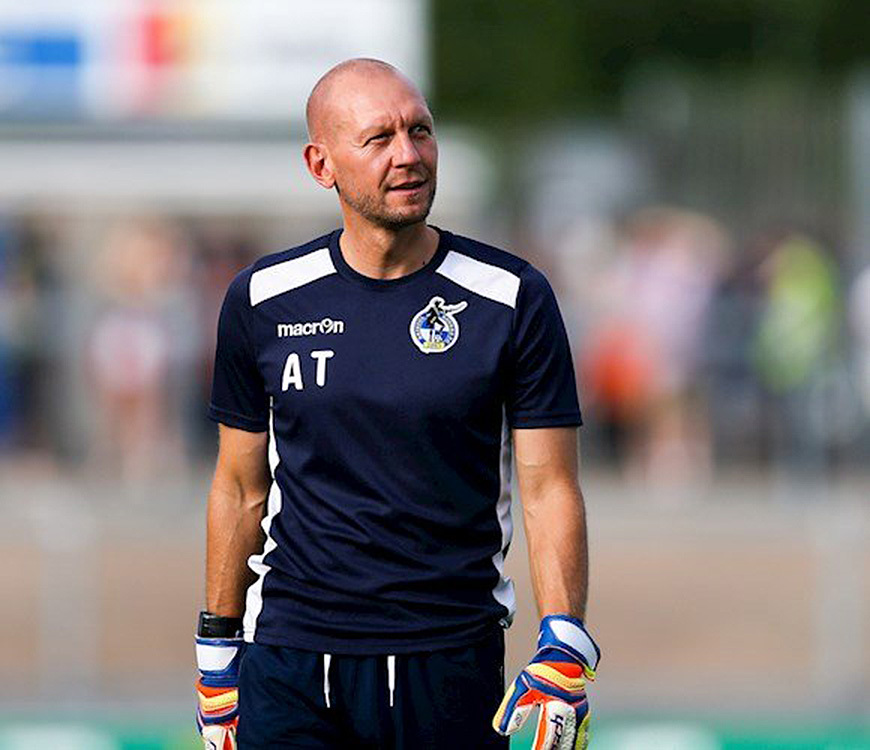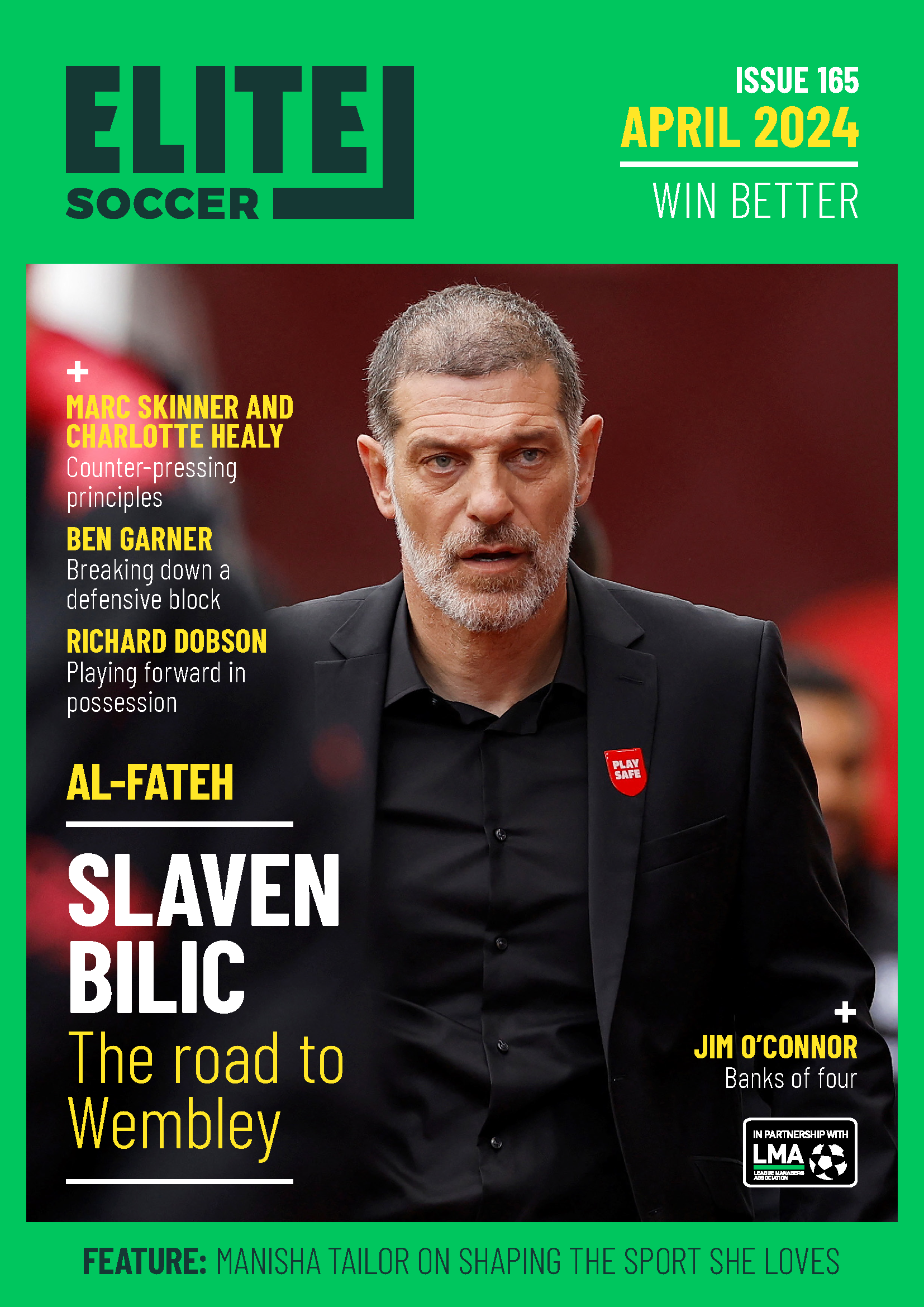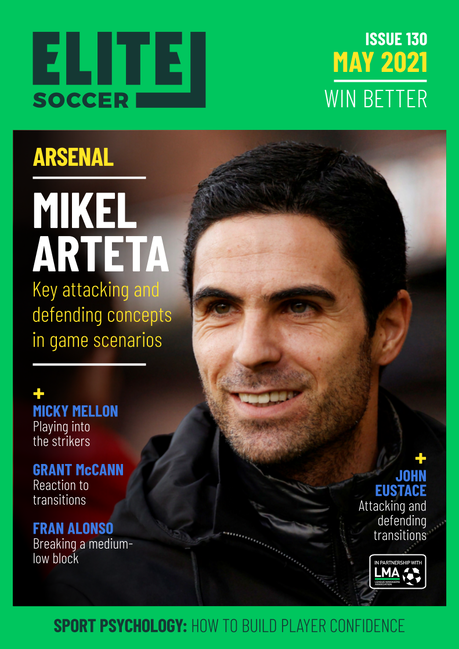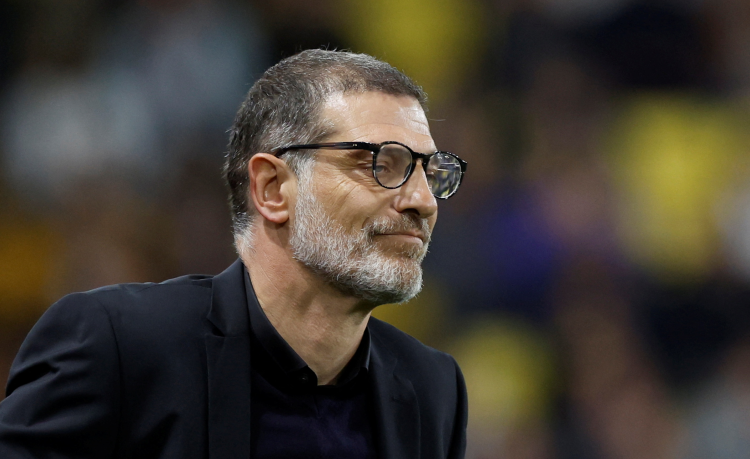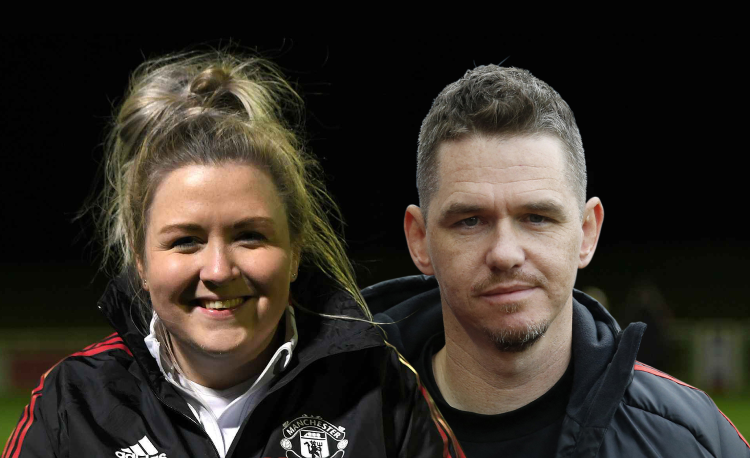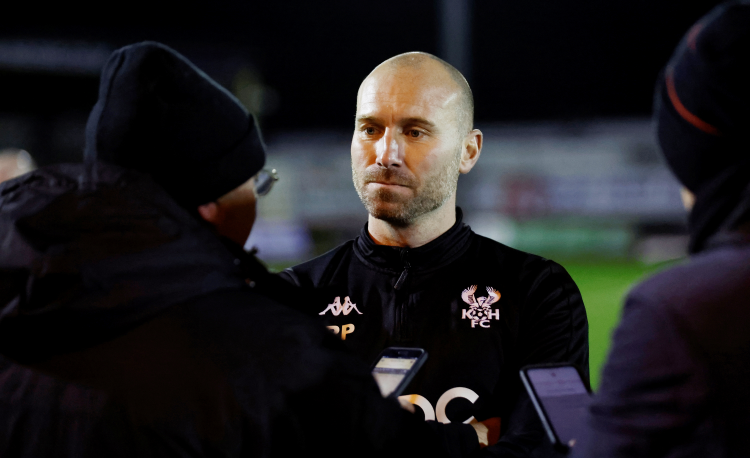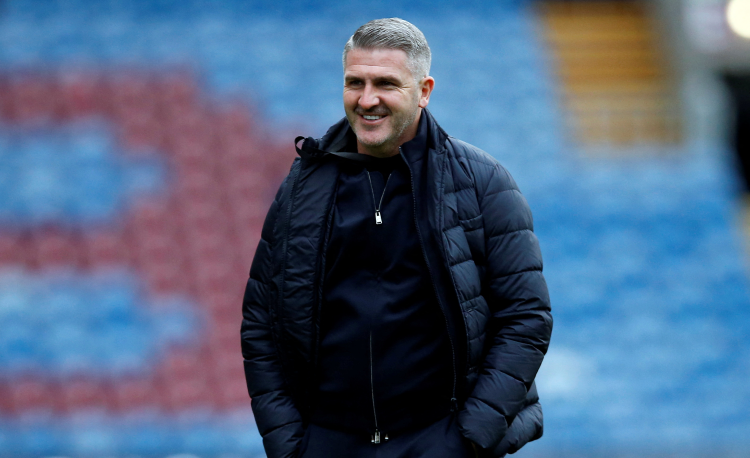You are viewing 1 of your 1 free articles
Keeper’s kicking drill
The platform for success often starts with a comfortable and confident goalkeeper, which is why this practice is designed to enhance the composure of goalkeepers when they have the ball at their feet. It uses situations that vary in space, time and pressure to test ability and decision-making skills.
| Area | Half pitch |
| Equipment | Balls, cones, goals |
| No. of Players | 12 (incl. 2 keepers) |
| Session Time | Warm-up 5mins, Development 15mins, Game 25mins |
This practice is designed to enhance the composure of goalkeepers when they have the ball at their feet. It uses situations that vary in space, time and pressure to test ability and decision-making skills.
We find that the platform for success often starts with a comfortable and confident goalkeeper. The more assured he is, the better the variation and accuracy of his supply to defenders and other players.
What do I get the players to do?
First, we run a 6v6 warm-up in a 25x20-yard area with keepers on opposite long touchlines. On opposite shorter touchlines add a player from each team. Simply, the starting team must retain possession by using both keepers (1).
1
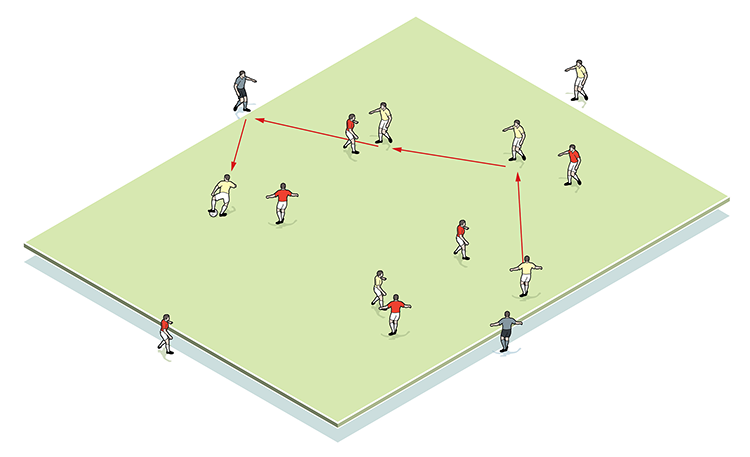
For the main 5v5 game, we lay three 18-yard boxes end to end. Outfield players cannot stray from the middle box. The team in possession must complete five passes before passing to either keeper (2a), who deals with the back pass and plays back out to the team in possession. That team can now score a point by playing through to the opposite keeper, and so on (2b). If play is turned over, the new team in possession now attempts to make five passes. If the ball goes out of play, the coach restarts.
2a

2b
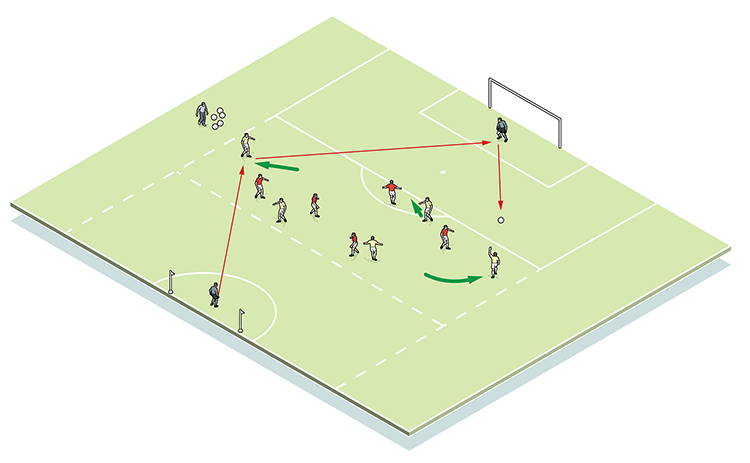
How do I progress the session?
To progress, when a back pass is made to a keeper, opposition players can enter the area to close him down and apply pressure. Here, he must make one of three decisions – pass to a supporting team mate (3a) , play the ball forward to an advanced player (3b), or clear the ball out of play. If he succeeds in completing a return pass, the team in possession can now send men to attack the far goal (3c). If a goal is scored, the ball goes dead or the keeper saves a shot, play restarts with the coach.
3a
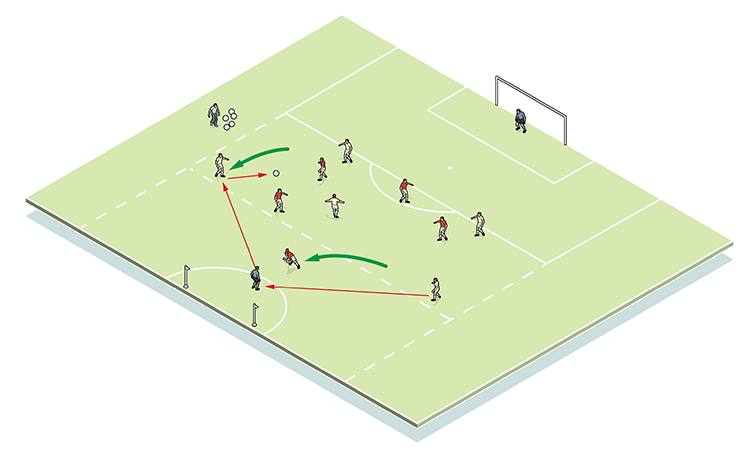
3b
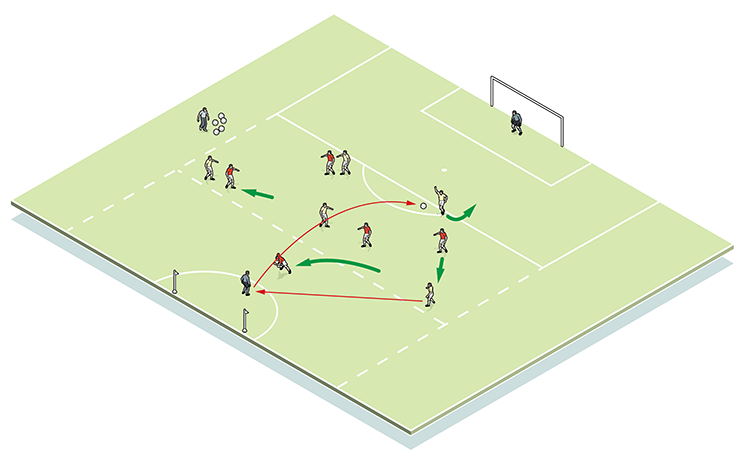
3c
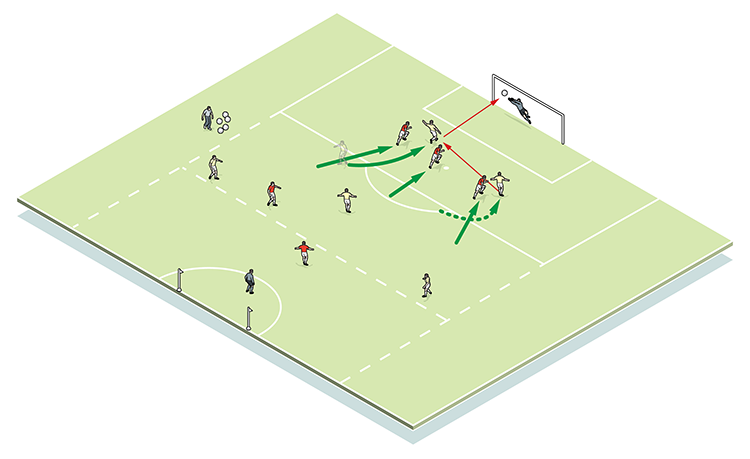
What are the key things to look for technically/tactically?
The keeper must stay focused - he needs to observe, communicate and understand the ever-changing player environment in front of him. He should always be positioned on the front foot, ready to receive the ball at any time.
How do I put this into a game situation?
In any game scenario, we can maintain and reinforce the aims and objectives of this practice by insisting that play always goes through the keeper before an attack can be launched.
Related Files
Editor's Picks
Intensive boxes drill with goals
Penetrating the final third
Creating and finishing
My philosophy
Pressing initiation
Compact team movement
Defensive organisation
Back three tactics
Counter-pressing as an offensive weapon
Coaches' Testimonials
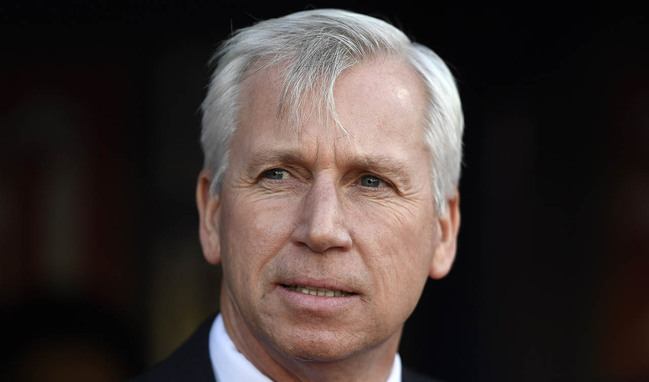
Alan Pardew
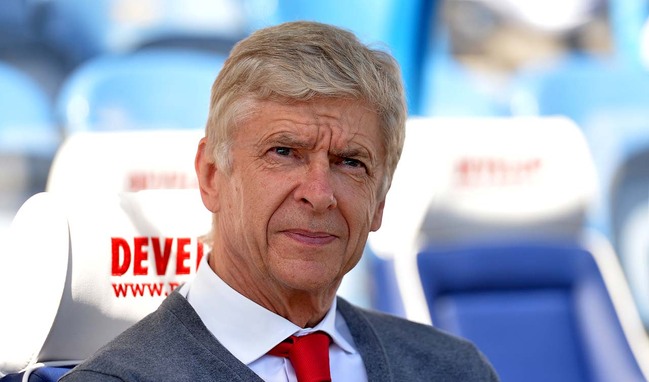
Arsène Wenger

Brendan Rodgers
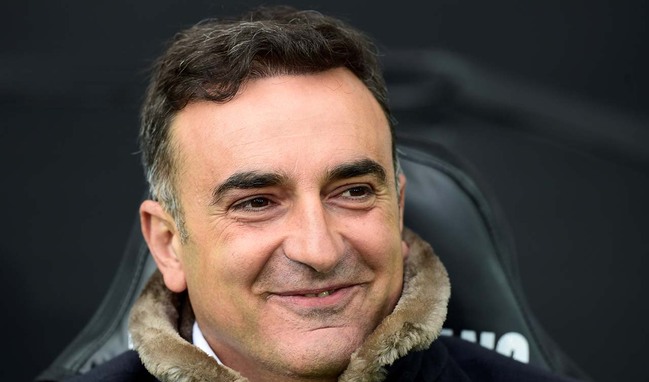
Carlos Carvalhal
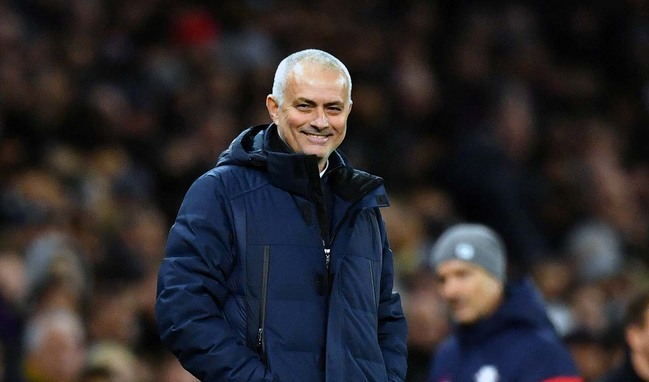
José Mourinho
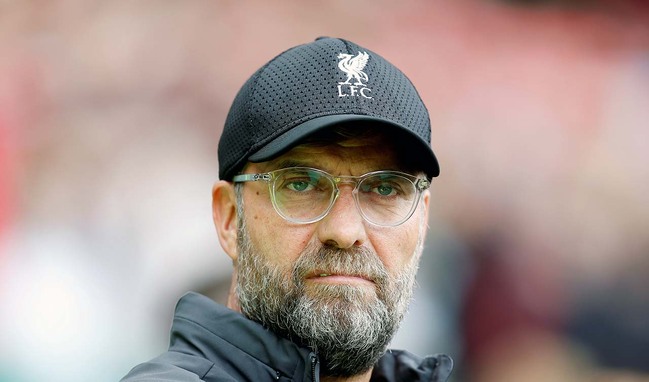
Jürgen Klopp
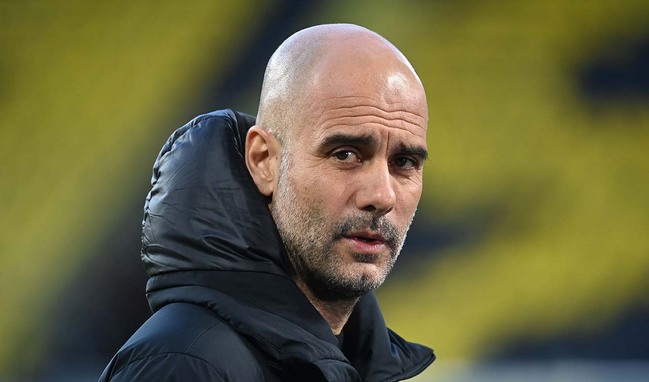
Pep Guardiola
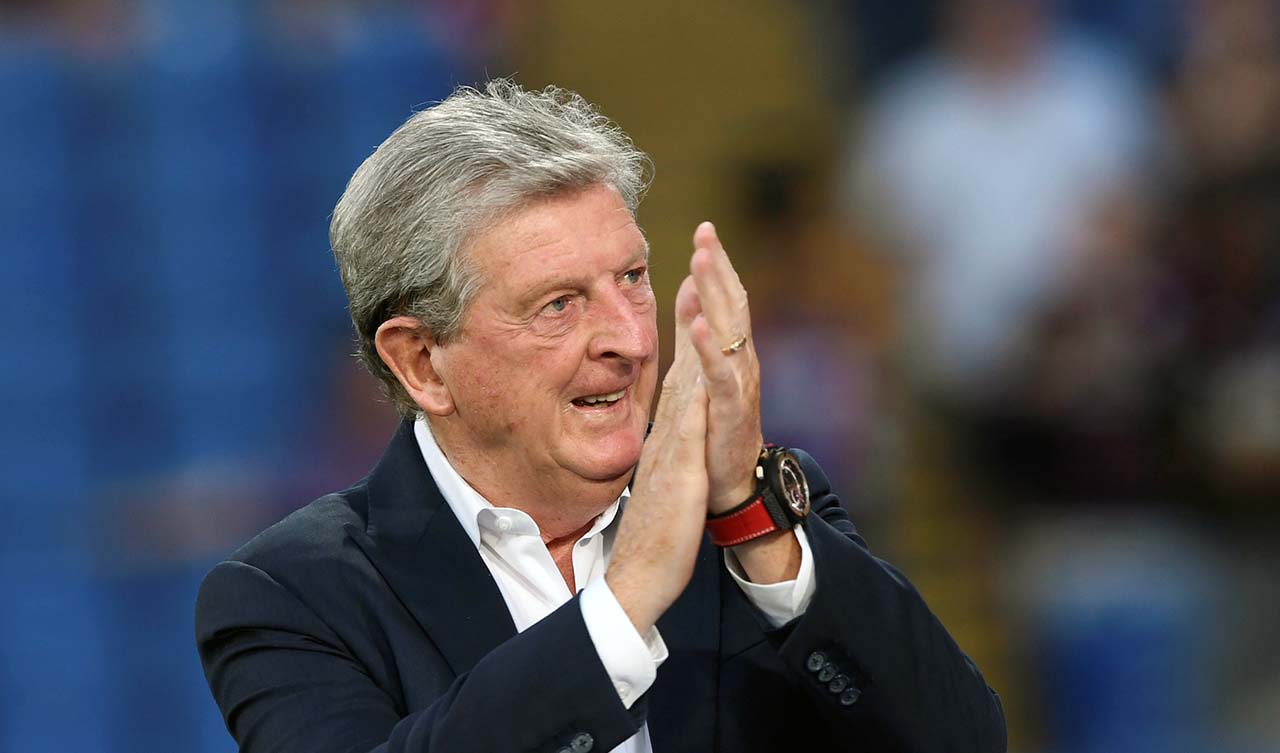
Roy Hodgson
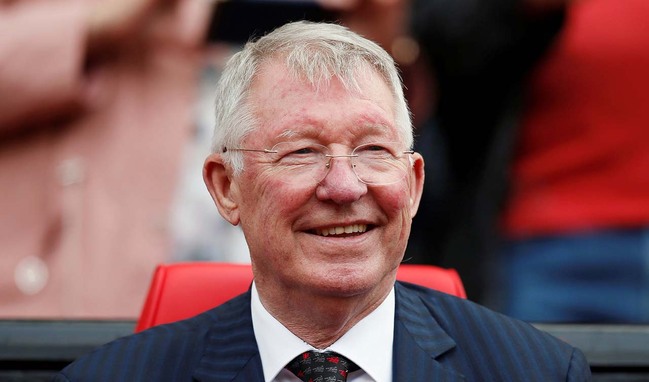
Sir Alex Ferguson
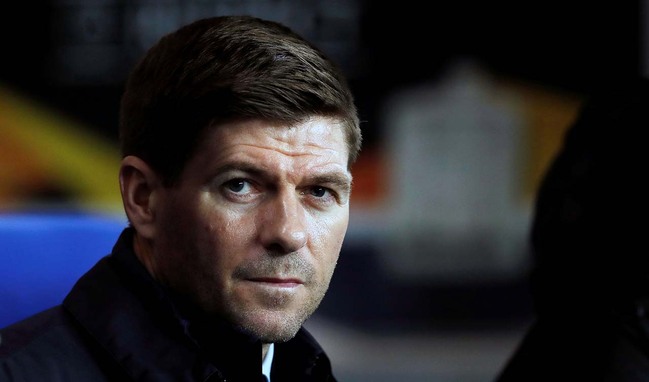
Steven Gerrard
Coaches' Testimonials

Gerald Kearney, Downtown Las Vegas Soccer Club

Paul Butler, Florida, USA

Rick Shields, Springboro, USA

Tony Green, Pierrefonds Titans, Quebec, Canada
Join the world's leading coaches and managers and discover for yourself one of the best kept secrets in coaching. No other training tool on the planet is written or read by the calibre of names you’ll find in Elite Soccer.
In a recent survey 92% of subscribers said Elite Soccer makes them more confident, 89% said it makes them a more effective coach and 91% said it makes them more inspired.
Get Monthly Inspiration
All the latest techniques and approaches
Since 2010 Elite Soccer has given subscribers exclusive insight into the training ground practices of the world’s best coaches. Published in partnership with the League Managers Association we have unparalleled access to the leading lights in the English leagues, as well as a host of international managers.
Elite Soccer exclusively features sessions written by the coaches themselves. There are no observed sessions and no sessions “in the style of”, just first-hand advice delivered direct to you from the coach.
